Two million people lack running water in the US. This Navajo Nation team is turning on the taps on tribal land
It is the shameful reality of America today that an estimated 2.2 million people Iive without running water. Senior climate correspondent Louise Boyle visits the Navajo Nation where 30 per cent of people lack this basic necessity
Your support helps us to tell the story
From reproductive rights to climate change to Big Tech, The Independent is on the ground when the story is developing. Whether it's investigating the financials of Elon Musk's pro-Trump PAC or producing our latest documentary, 'The A Word', which shines a light on the American women fighting for reproductive rights, we know how important it is to parse out the facts from the messaging.
At such a critical moment in US history, we need reporters on the ground. Your donation allows us to keep sending journalists to speak to both sides of the story.
The Independent is trusted by Americans across the entire political spectrum. And unlike many other quality news outlets, we choose not to lock Americans out of our reporting and analysis with paywalls. We believe quality journalism should be available to everyone, paid for by those who can afford it.
Your support makes all the difference.For 76 years, Lucy Vandever lived without running water. Then one day, she could turn on the taps.
“She bought herself a washer and dryer, and loves to water the trees that she’s planted. I’ll see her washing her car outside. Those are some things that I like to see, especially for our elderly people,” Cindy Howe, Ms Vandever’s niece, told The Independent.
Ms Vandever had been bottom of a waiting list to have her home hooked up to a water main “for years and years”, her niece said.
As a member of the Navajo Nation, the tribal elder’s experience is far from unique. A lack of clean, safe water affects around 30 per cent of the 173,000 people on the Navajo Nation, a vast territory equivalent in size to West Virginia, which spans Utah, Arizona and New Mexico in the American Southwest.
It is a shameful, lesser-known reality of the United States in 2022 – where the wealthy fret over drought-stricken Koi ponds, celebrities drench the lush grounds of California megamansions, and luxury hotels boast water sommeliers – that about 2.2 million people Iive without running water.
The issue affects Native Americans at 19 times the rate of white Americans; Black and Latino people are twice as likely to be affected than white Americans.
From California’s Central Valley to the Texas border, Alabama and West Virginia to Puerto Rico, there are homes lacking this basic right.
The overarching theme is that the poor, historically disenfranchised and minorities are hit hardest.
‘My main concern is the snakes’
If turning on taps, running a hot shower and flushing the toilet come as second nature, it can be hard to imagine life without.
Tina Becenti doesn’t have to. Until recently, the manager of the Navajo Nation’s Baca/Prewitt community chapter was raising her three teenagers and twin four-year-old girls in a home without running water.
”We used to pack buckets, empty milk plastic jugs, little pickle jars – whatever we could fill water in – and drive down the road to my mom’s house,” she told The Independent. “We would use her water to fill up and bring it back to the house.”
In lieu of an inside toilet, Ms Becenti has rented a Porta-potty. ”I didn’t realise that it would cost over $100 a month,” she said. “To some people that might not be anything but for a parent who has five kids and raising them alone, it’s very hard to fit into your finances. But I make it work.”
Not wanting to locate the Porta-potty too close to her home meant that the family has to contend with an icy trail and bitter cold to use the bathroom during winter. The summer brought other concerns.
“[In] the warmer season my main concern is the snakes. At night you can’t see what’s on the ground. I have two younger children who are potty-trained but I don’t let them go out there,” she said.
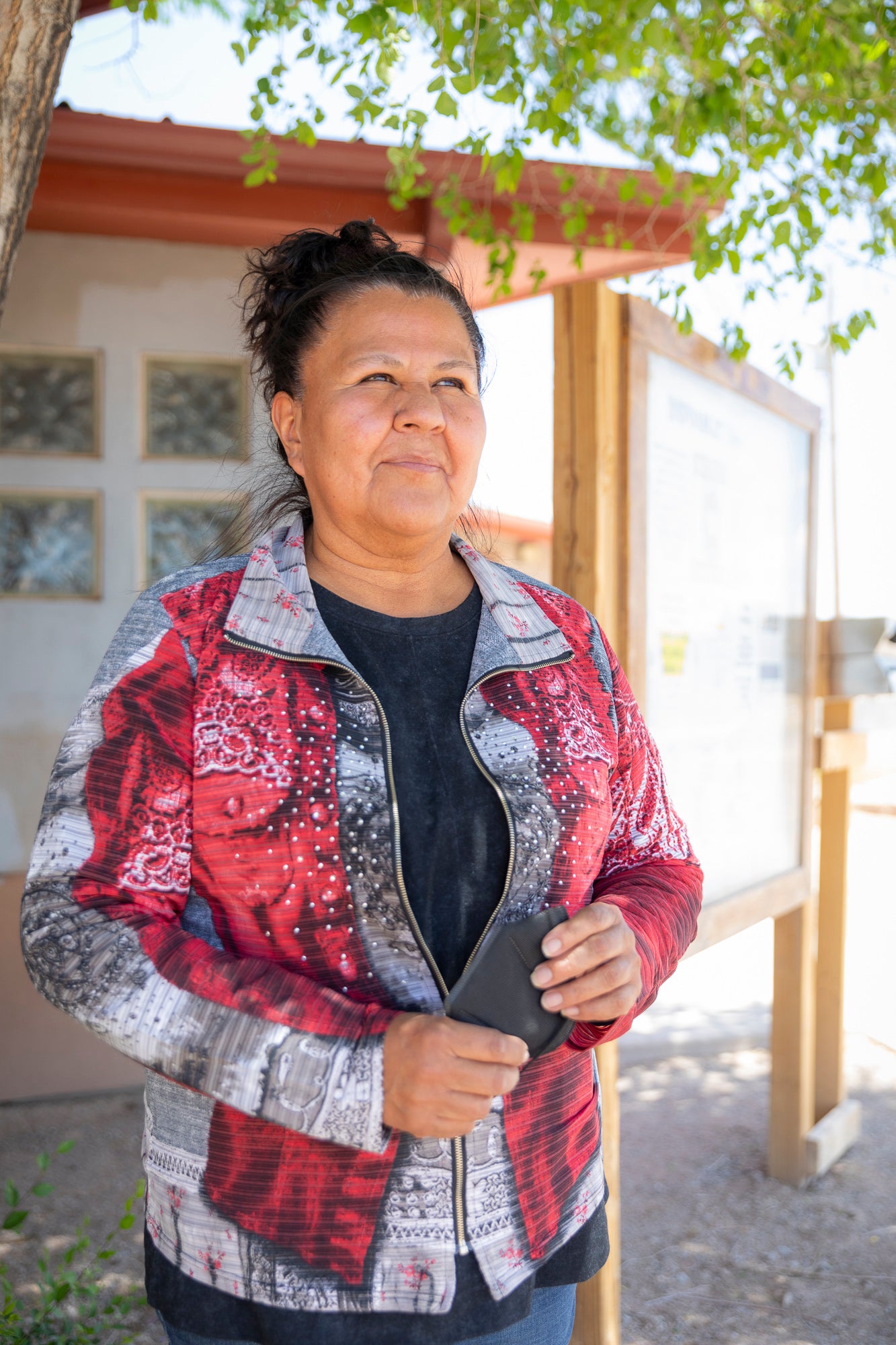
Living without water goes beyond the physical hardship. It carries a mental burden.
“If you run out [of water] in the evening, you have to get up earlier the next day to make sure that there’s water for the kids to wash hands, brush their teeth, make breakfast,” Ms Becenti said. “It was time-consuming and took a lot of energy.”
While Ms Becenti and her children are still showering at her mother’s house, they now have hot and cold running water thanks to the Navajo Water Project (NWP), an Indigenous-run organisation which has installed hundreds of tanks in homes not connected to piped water or sewer lines across the reservation.
Ms Howe manages the NWP team in Thoreau, New Mexico.
“[My team] like what they do, especially when it’s for a grandma or grandpa,” she told The Independent. “And they really love to help veterans.”
The project is one of several run by DigDeep, a human rights non-profit which expands access to clean, running water in the US. The group’s latest research discovered that the economy loses $8.6bn each year due to lack of water access, in part due to health impacts like higher risk of waterborne diseases, diabetes, and mental health issues.
There’s also the Appalachia Water Project in McDowell County, West Virginia, where thousands have no running water, or water that’s too dangerous to drink, after decades of coal mine pollution, neglected pipes – and lack of political will to do anything about it.
DigDeep is also at work in the Cochran colonia, a community in El Paso. Lack of water impacts half-a-million people who live in colonias along the Texas-Mexico border.
The legacy of the Manhattan Project
In theory, the Navajo Nation has water rights as part of a treaty signed with the US federal government in the 19th century. But, for generations, those promises have been broken.
Tribes, including the Navajo, were also left out of deals made in the early 20th century over how to allocate water from the Colorado River, which supplies 40 million people across seven states and part of Mexico.
On top of this is chronic underinvestment in infrastructure. Many tribal members live in remote areas of the 27,000-square mile territory which can make extending lines from centralized water systems into a costly pursuit.
The Indian Health Service, responsible for medical and public health services to tribes, estimates it would cost $200m for basic water and sanitation access in all Navajo homes.
So instead, thousands of Navajo people drive up to several hours at a time to either buy expensive, bottled water from grocery stores or haul huge, 55-gallon barrels from wells and public taps, often rationing supplies until the next trip.
Others rely on thousands of unregulated wells, springs, or livestock troughs that are spread across the reservation, and can pose a serious health risk. According to the Environmental Protection Agency, these sources may contain bacterial or fecal contaminants, along with unsafe levels of uranium and arsenic – a legacy of mining on Navajo land which began with the US military’s Manhattan Project for nuclear weapons in 1944 and continued until 2005.
Safe or not, in many areas, these sources of water are also drying up.
The Navajo Nation is a landscape of dramatic red rock formations and sweeping high-desert expanses under a dome of magnetic, blue sky. But it is also unforgiving and exposed terrain where summer temperatures top 100 degrees – and rising due to the climate crisis.
The Southwest, among the fastest-warming parts of America, is predicted to get less rainfall in the coming decades. This will do little to help the current “megadrought” which has gripped the region for the past two decades, transforming semi-arid land into desert dunes.
The majority of the Navajo Nation’s rivers no longer flow year-round while lakes and smaller bodies of water have decreased by 98 per cent since the early 20th century.
“Our elders won’t call it climate change but they will tell you that the trees are dying, or we should have planted our squash and corn by now,” Ms Howe says.
Her sentiments are echoed by Nicholas Chischilly, of the Navajo Nation Climate Change Program, who told The Independent that the organisation’s number one focus is coping with severe drought.
“The ideal way would be to revert these changes and have plentiful water everywhere but this is not the case. We’re seeing what projects we can start in our communities and carry on for years because we’re going to be in it for the long haul,” he said.
“Our elders speak from experience, and they say that we need to change, to adapt, and to teach the young ones to live in the natural world because they’re seeing us become so disconnected.”
While a hotter world is the overarching threat to the Navajo’s long-term water security, the Covid pandemic illustrated the dangers of an immediate crisis.
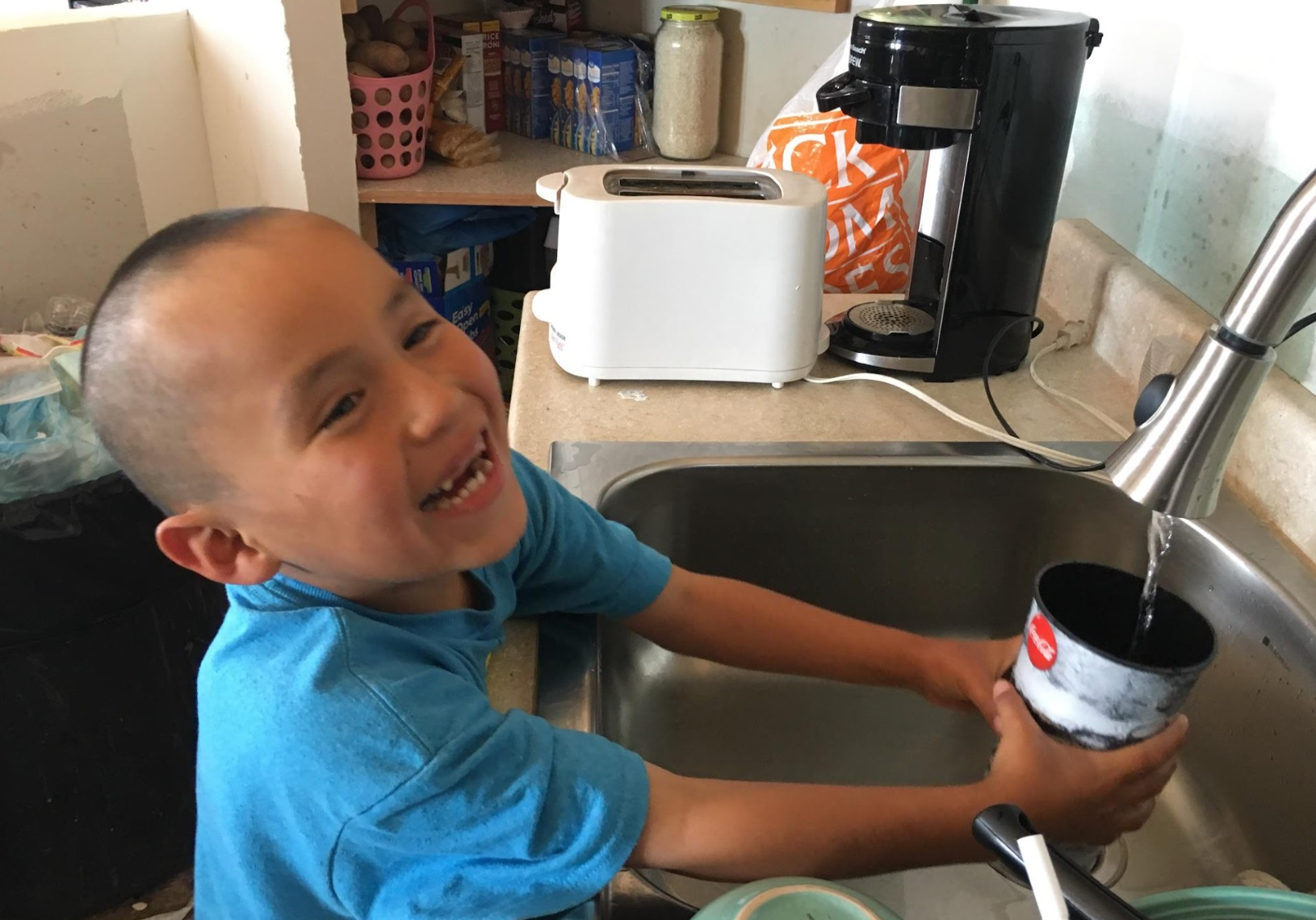
In May 2020, the Navajo Nation had the highest Covid infection rate in the US, surpassing other hard-hit areas like New York City. Nearly 1,800 people on the Navajo Nation have died from Covid, a mortality rate of about 33 people per every 1,000 cases. In contrast, neighboring Utah’s average is five Covid deaths per 1,000 cases.
The pandemic had another consequence: it sent many young Navajo back to their parents and grandparents’ homes (an estimated 127,000 tribal members live off the reservation), and added to the demand on already limited water supplies.
Regularly washing your hands was recommended as a protection against Covid - advice that’s hard to heed in communities without running water, Ms Howe pointed out.
“Covid is still here, it’s not going to go away. So [helping] people with no water is very important,” she added.
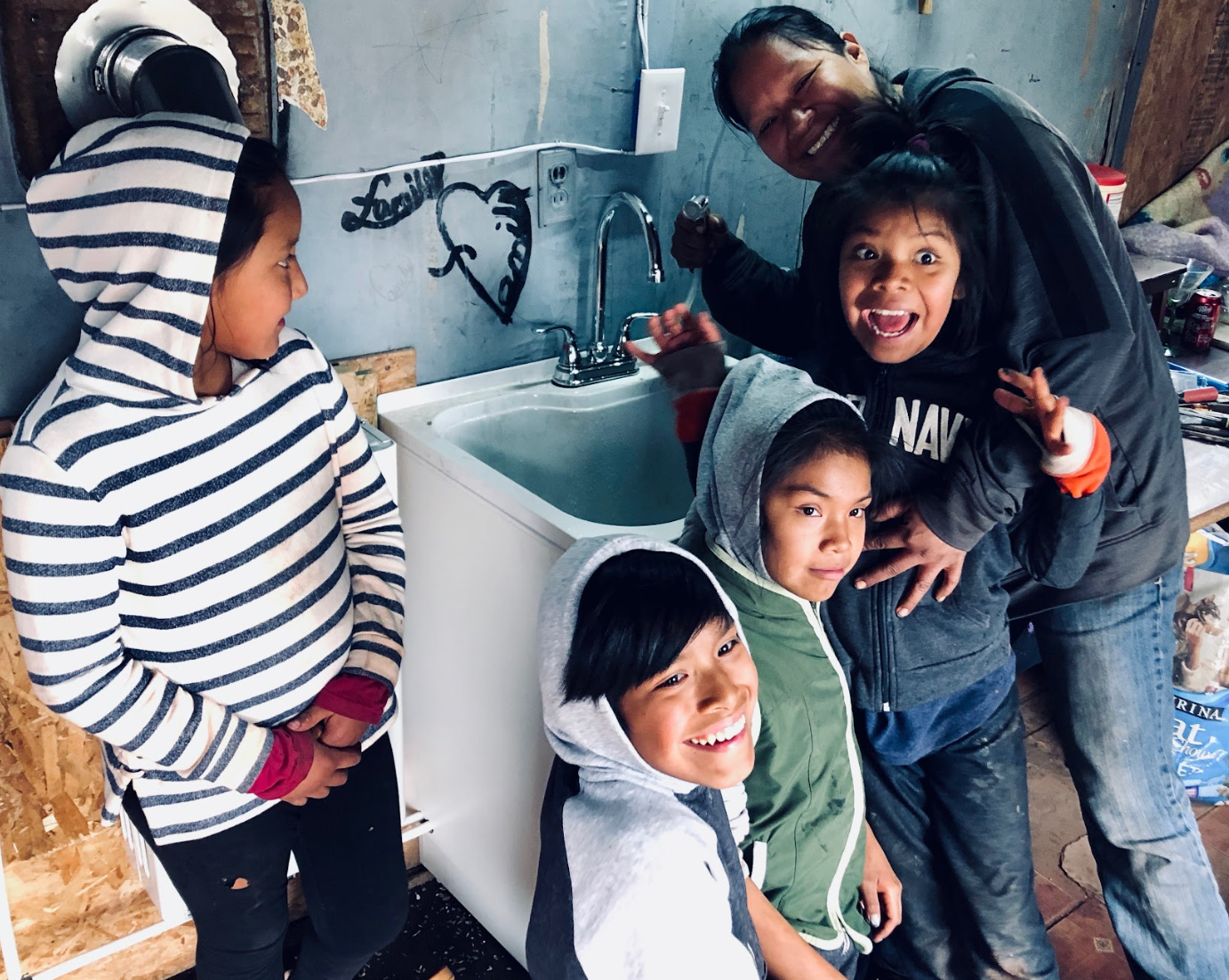
The Suitcase
The Navajo Water Project team is used to challenges in a place where hardship and few resources are common.
“Some homes on the reservation are in really bad shape,” Ms Howe says. “Some are ready to fall over. Or [a home] could have a 10-inch wall that’s leaning in, and we’re afraid to drill a hole because it might collapse. Those are the kinds of homes that people live in and that’s the only place they have, so they’ve got no choice but to stay there.”
The team takes a day or less to install running water. A 1,200-gallon tank is buried outside a property before an existing sink is plumbed inside a home or a new sink is added. Then comes a water heater, filter and drain line, before solar panels to power the system, and the tank is filled.
But at the height of the pandemic, it was too risky for people to be in such close quarters inside homes.
Ken Chavez, a NWP technician, came up with a solution. He invented an insulated box to hold a water pump, filter, and an expansion tank (which protects closed water heating systems from too much pressure). The new design meant that a tank with an above-ground tap could be installed outside of people’s homes and social distancing maintained.
Mr Chavez told The Independent that the idea came about after an argument with his wife led to him deciding to spend a night away from home in his trailer.
“I got a small suitcase, about 2x4, put clothes in there. I don’t have running water at my trailer, so I put four bottles of water in there too. When I got down to Thoreau, I forgot about it, left it in the truck and just went to bed.
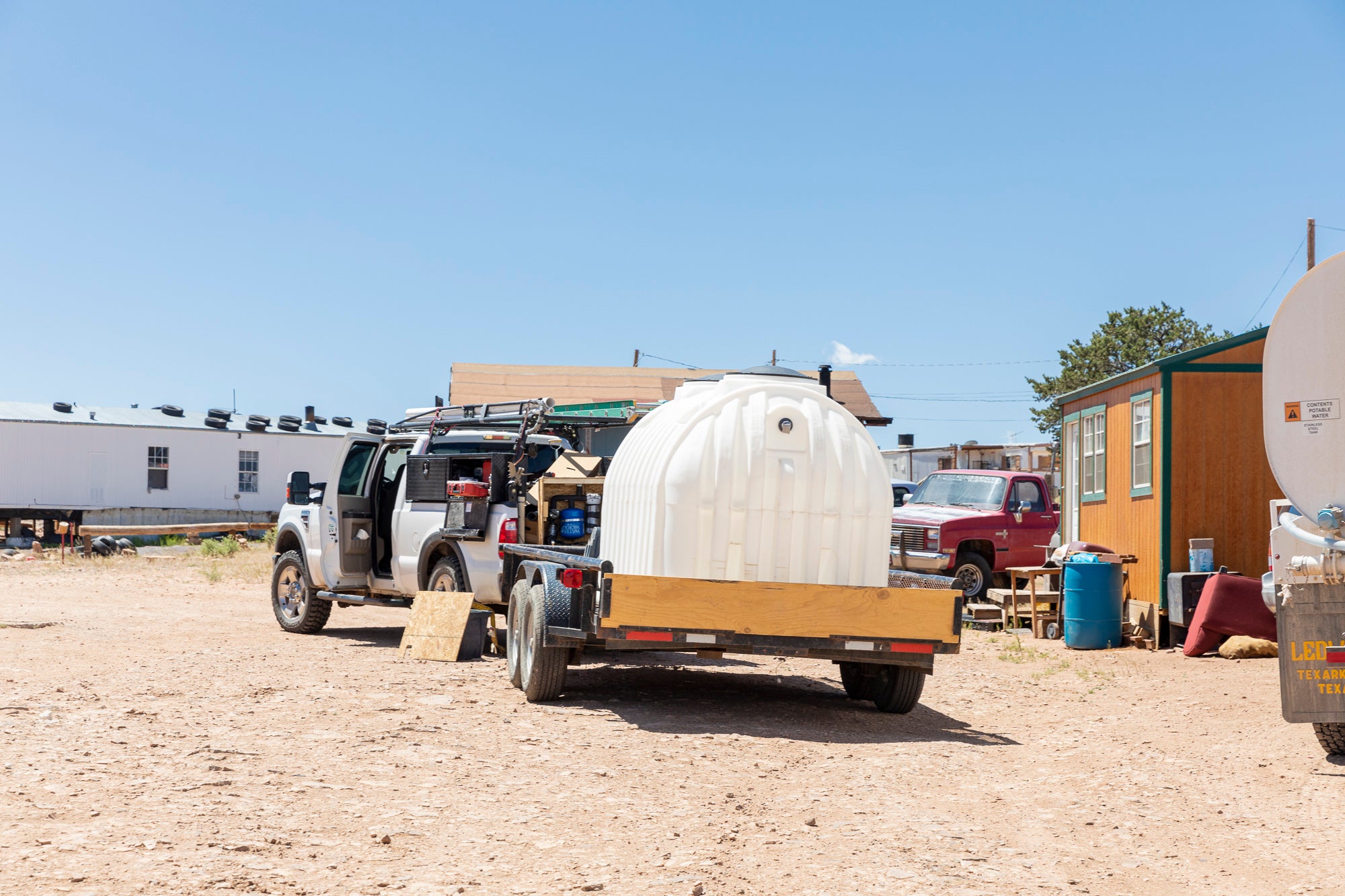
“Next morning when I woke up, I was thirsty so I went outside for my suitcase. When I brought it in, [the water] wasn’t frozen or anything, it was just cold. I started thinking about the pumps and suspension tank that we had been installing inside houses.”
The so-called “Suitcase” was born. Mr Chavez also pointed out the design’s minimal waste. “During Covid, the lumber price was way high with one board close to $60 a sheet so we decided let’s have no waste on it. One 4x8 can build two Suitcases,” he added.
Mr Chavez’s invention was named a finalist for Fast Company’s 2021 Innovation by Design Awards. “My guys are doing the work of engineers,” Ms Howe said, proudly.
Since the project began eight years ago, several hundred families have received access to running water, and new project offices have opened in Utah and Arizona.
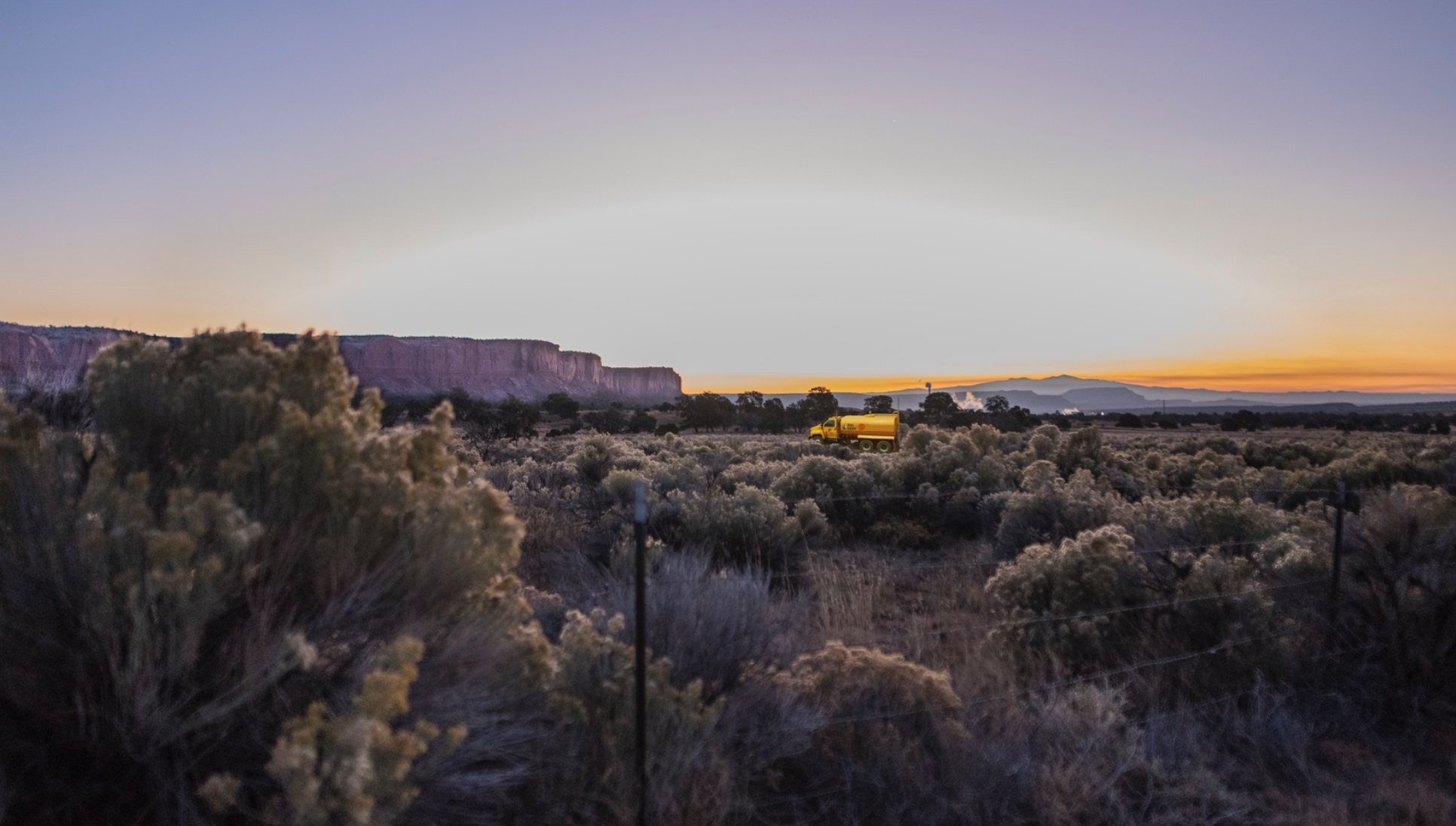
The non-profit’s work is set to be bolstered after the US government announced this week the launch of a first-of-its-kind pilot program to tackle wastewater issues in 11 areas across America, , including rural and Indigenous communities. The program is built on the research and recommendations of DigDeep.
It follows an agreement, signed in May by the government and Navajo leaders, to fund more drinking water infrastructure on parts of the Navajo Nation and protect the tribe’s reserved water rights.
Among the signatories was Interior Secretary Deb Haaland, a 35th-generation New Mexican and member of the Pueblo of Laguna, who is the first Native American woman to become a White House Cabinet member.
“Having modern water infrastructure is not only crucial to the health of our kids and families – it’s also important to economic opportunity, job creation and responding to the intensifying effects of climate change,” said Secretary Haaland.
Ms Howe echoed that sentiment, noting that “our people have been without water for a long, long time”. She said that for herself and her team, helping fellow Navajo people was the driving force.
“They’re out there every day, in the wind, the rain, the snow, it doesn’t matter, because they want to help that person,” she said.
“Especially the kiddos. When they first turn on the faucet, just to see the look on their faces, it's really it's worth everything that we do.”
This article has been updated to reflect that lack of running water affects Native Americans at 19 times the rate of white Americans, not 67 times

Join our commenting forum
Join thought-provoking conversations, follow other Independent readers and see their replies
Comments